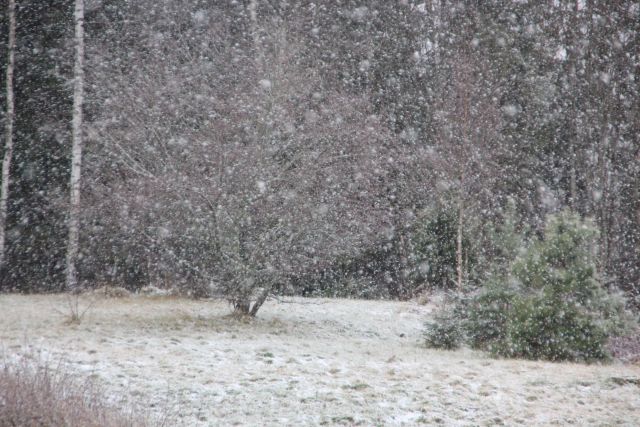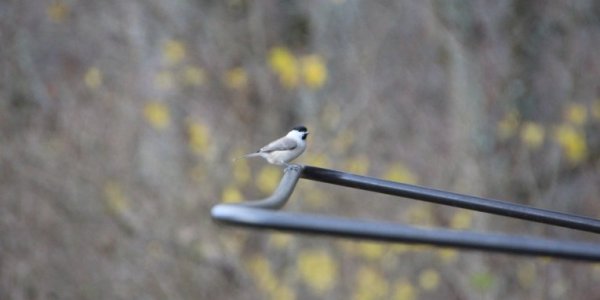When Autumn is Giving in to Winter
November, the month of frost, is over. But astronomical autumn continues. In recent decades, there have been a number of cases when meteorological autumn tends to last longer. Sometimes - with a few frosty interruptions - autumn weather may continue until spring. Despite the changing weather, December has come and animals are busy searching for food.
Air temperature
Meteorologists forecast this year's winter to be cold - the coldest in the last hundred years. Although in December Atlantic cyclones will bring thaws, January and February will be unusually cold. Cold waves are even expected in March. Perhaps, therefore, Europeans will experience the first real spring warmth only in April. That's what meteorologists say.
But let's go back to November with diverse meteorological conditions and relatively much precipitation. Frost, sun, snow, wet snow, warmth, rain, sun, wind, snow again - we saw it all in different places in Latvia.
Is really all peaceful and quiet?
Anyway, leaves of deciduous trees and bushes have turned yellow, then brown and mostly fallen down. The strong wind has worked hard to undress the trees. Now the fallen leaves are all wet and lying in the ground cover. Just like different caulescent plants. And ferns. Only the red fruit of wild rose, viburnum, woody nightshade in some places compensate for the lack of bright colours.
As winter is approaching, terrestrial invertebrate animals are to be seen less frequently. But still. In thaw, if you look closely, various insects (mainly diptera) may be spotted in snowy places. Despite the weather conditions, other terrestrial insects, such as a variety of beetles and their larvae, chrysopidae, small butterflies, butterfly larvae, and others are more or less active. Different species of water insects are still to be seen in waters that are free from ice cover.
When the temperature stays above zero, in sunny spots one can come across quite large numbers of small spiders. Here and there you will see some female opiliones - those that have not yet finished laying eggs. They will lay eggs and ... die. It happens every autumn. The life of opiliones lasts for one season only. Being one of the most cold-resistant terrestrial invertebrates in Latvia, they reach their sexual maturity very late in autumn.
Naturally, we cannot see the active underground invertebrates. But they are there. And - in larger quantities than those living above the ground. Great frosts interchanging with thaws, and not long-lasting frost as one would expect, are the most dangerous survival conditions for all invertebrates - both those who are visible to our eyes and those who are not.
Birds are busy searching for food
Last month, vertebrates, and in particular birds, were the most visible animals. Almost all the classic migratory birds are already gone. We can mainly see resident birds and nomadic birds, here and there some of the few migratory birds. Some of those who remain here just like in summer are looking for feed in forests, marshes, meadows, shrubs, reeds. But many take the easy way out and go to humanised areas where they often lose their caution. And we can take an advantage of it and have a closer look at them. Even inclement weather conditions cannot stop the bustling of birds. Birds (day birds) cannot afford to have a careless rest: nights are long, and in the short periods of light they need to collect the entire daily dose of energy or feed.
Thicker and brighter winter coat
Mammals are not complaining yet (neither herbivores, nor predatory animals), since there is enough of feed and it is easy to get it. Also rodents still feel satiated.
In November, mating period started for the wild boars not affected by the African swine fever. Only young boars are wandering around alone during the mating period. Piglets are forced to say in small groups not far from their mothers who are taken over by the mating instincts. It is because boars scare them away from their mothers.
If you spot a mammal in the forest, you will notice that they all are wearing a winter coat. For the majority (except ermines, weasels, white hares) winter coat does not become white, but only lighter. Also, thicker, of course.

As snow is melting in thaw, the white coat of white hares, ermines, weasels stands out against the greyish background. Amphybiotic animals - beavers, muskrats, otters and minks - are least affected by the colour change.
Activity in the water
Even if migration from the sea is not yet over, in November spawning period started in fresh-water for two of the so-called migrating salmonid species - salmon, sea trout - and for resident salmonid fish - brook trout. Part of salmon and sea trout population will go back to the sea after spawning. Trout, of course, will not go anywhere. Salmonid eggs will remain in pits specially dug by the parents where the eggs will lie until spring, when they will hatch. At night, river lampreys are continuing migration from the sea to spawning grounds. However, they will spawn only in spring.

















